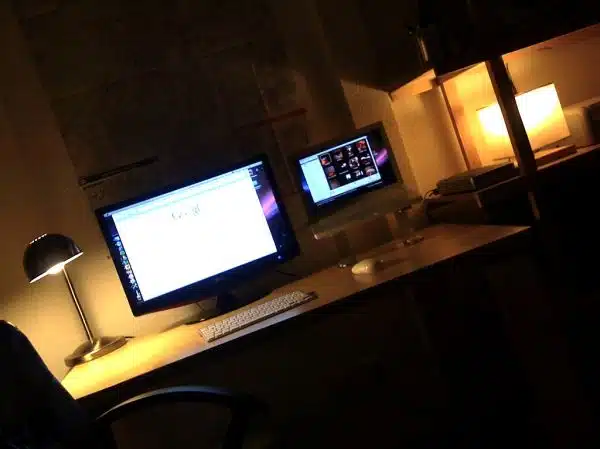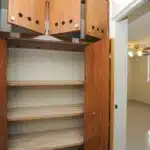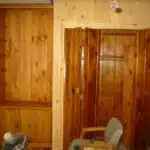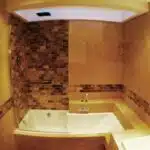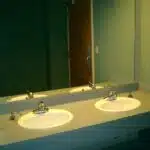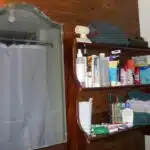Organizing your home can be an overwhelming task, especially if you have a lot of clutter and don’t know where to start. However, with the right mindset and approach, you can take control of your space and create a functional and organized home that suits your lifestyle. As a professional home organizer, I have seen firsthand the transformative power of decluttering and organizing on people’s lives. In this article, I will share my insights on where to start when organizing your home, so you can create a space that brings you joy and peace.
The first step in organizing your home is to set a clear intention for what you want to achieve. This could be anything from creating more space in your closet to improving the functionality of your kitchen. Once you have identified your goals, it’s time to assess the current state of your home. Start by going through each room and taking note of what items you no longer need or use. This process can be difficult, as we often attach sentimental value to our possessions or convince ourselves that we may need them someday. However, it’s important to be honest with yourself about what truly serves a purpose in your life and what doesn’t. By letting go of things that no longer serve you, you’ll create more physical space in your home as well as mental clarity in your mind.
Setting Clear Goals For Your Home Organization
Creating achievable goals is a crucial step when organizing your home. Without clear objectives, you may find yourself overwhelmed and unsure of where to begin. Start by examining each room and identifying problem areas that need attention. Perhaps the kitchen counter is always cluttered, or the closet is overflowing with clothes. Write down specific goals for each area, such as decluttering the counter or donating unused clothing.
Once you have established your goals, it’s essential to track your progress regularly. This will help keep you motivated and accountable for achieving your objectives. Use a checklist or planner to mark off completed tasks and celebrate small wins along the way. Seeing tangible progress can provide a sense of accomplishment and spur continued effort.
Creating achievable goals and tracking progress are foundational steps in home organization. By breaking down larger projects into smaller, manageable tasks, you’ll be more likely to stay motivated and make meaningful progress towards your ultimate goal of an organized home. In the next section, we’ll explore tips for maintaining motivation throughout the process.
Tips For Maintaining Motivation
Maintaining motivation is an essential aspect of any home organization project. It can be challenging to keep up the momentum required to complete the entire process, especially when you encounter obstacles or setbacks along the way. Remember that organizing your home is a journey, and it takes time and effort. Here are some tips for maintaining motivation throughout the process.
Firstly, celebrate milestones as you progress through your home organization project. Breaking down your goals into smaller tasks can help give you a sense of accomplishment each time you complete one. Take the time to acknowledge your achievements, no matter how small they may seem. This recognition will help boost your motivation and encourage you to continue working towards your ultimate goal.
Secondly, finding support can also help maintain motivation during this process. Don’t be afraid to ask for help from family or friends who can lend a hand or offer encouragement when needed. You can also find support online through social media groups or forums dedicated to home organization. Connecting with others who are on a similar journey can provide inspiration and accountability.
Lastly, remember that setbacks are inevitable in any project, but they don’t have to define your progress or discourage you from continuing. Instead of focusing on what went wrong, take the opportunity to learn from it and adjust accordingly. With determination and persistence, you’ll be able to achieve your goal of an organized home.
- Celebrate milestones
- Find support
- Learn from setbacks
As you continue on this journey towards an organized home, remember that it’s not about achieving perfection but rather creating a space that works best for you and your family’s needs. Now that we’ve discussed tips for maintaining motivation let’s move onto creating a plan of action for tackling each area of your home systematically without getting overwhelmed with the task at hand.
Creating A Plan Of Action
One interesting statistic to note is that the average American spends 2.5 days per year looking for lost items in their homes. This shows the importance of organizing your home to save time and reduce stress. Creating a plan of action can help streamline the process and make it feel less overwhelming.
The first step in creating a plan of action is to create a timeline. Break down the process into manageable tasks and assign each task a deadline. This will help you stay on track and avoid feeling overwhelmed by the entire project. Keep in mind that organizing your home is not an overnight process, so be realistic with your timeline.
Another helpful strategy for staying on track is seeking accountability partners. Sharing your goals with friends or family members can provide motivation and support throughout the process. Consider hiring a professional organizer or scheduling regular check-ins with an accountability partner to keep yourself accountable.
With a clear timeline and accountability partners in place, you are ready to begin prioritizing rooms and areas in your home to organize. Start by identifying which areas are causing the most stress or taking up the most time, such as your closet or kitchen. By tackling these areas first, you will start to see progress and feel motivated to continue organizing other areas of your home.
Prioritizing Rooms And Areas
Before diving into the task of organizing your home, it is important to prioritize which rooms and areas need your attention first. One helpful way to do this is by creating a room hierarchy, which involves ranking each room based on how frequently it is used and how essential it is to your daily routine. For example, you may want to focus on organizing the kitchen and living room before tackling the guest bedroom or home office.
Once you have established your room hierarchy, it’s time to allocate time for each area based on its priority level. This means dedicating more time to higher-priority areas than lower-priority ones. A good rule of thumb is to spend around 80% of your time on the top 20% of priority areas, as this will have the greatest impact on improving the overall functionality and appearance of your home.
By prioritizing rooms and areas in this way, you can approach the task of organizing your home in a systematic and efficient manner. Remember that organizing is not a one-time event but an ongoing process, so be sure to regularly reassess your room hierarchy and adjust your time allocation accordingly.
As you move forward with organizing your home, the next step is assessing your space and decluttering any unnecessary items that are taking up valuable real estate. This process can be daunting, but with a clear plan in place, you can make significant progress towards achieving a clutter-free home that supports a happier, healthier lifestyle.
Assessing Your Space And Decluttering
After prioritizing the rooms and areas in your home, the next step is to assess your space and minimize clutter. It is easy to accumulate items over time that we no longer need or use, leading to a cluttered and overwhelming living environment. By assessing your space, you can identify areas that require attention and prioritize which items are necessary for your daily routine.
Assessing your space involves taking a critical look at each room and identifying areas that need decluttering. Begin by categorizing items into piles of keep, donate or discard. This process will help you identify which items are essential for your daily routine and which ones are unnecessary. When assessing each room, ask yourself whether each item serves a purpose or brings joy into your life. If not, it may be time to let it go.
Minimizing clutter is crucial in creating a functional living space that promotes relaxation and productivity. It helps reduce stress levels, increases focus and saves time spent looking for misplaced items. By assessing your space and minimizing clutter regularly, you create an environment that feels organized, spacious and inviting. The next section will discuss how to identify items to keep, donate or discard while organizing each room in your home effectively.
Identifying Items To Keep, Donate, Or Discard
When organizing your home, it’s essential to identify items that you want to keep, donate, or discard. Sorting through your possessions can be an overwhelming task, but with a systematic approach, you can make the process more manageable. Start by selecting one room and focus on one category of items at a time.
To begin with, choose the items that you want to keep. These are things that you use regularly or have sentimental value. Keep in mind that this is not an opportunity to hold onto everything just because it has memories attached to it. Consider whether you genuinely need the item and if it will serve a practical purpose in your life moving forward.
Next, identify the items that are still usable but no longer useful to you. These are perfect candidates for donation. Separate them into piles according to what charity or organization could benefit from them most. Additionally, consider recycling some items instead of donating them due to their condition or age.
Finally, determine which items need to be discarded entirely and which ones can be recycled. Discard any broken or damaged items beyond repair since they will only take up space and create clutter in your home. On the other hand, recycle anything made of paper, cardboard, glass, metal, or plastic that cannot be donated.
By sorting through your possessions and identifying what you want to keep, donate or discard carefully; you can reduce clutter in your home while ensuring that nothing goes to waste unnecessarily. The next step is organizing your closet and clothing so that everything has its place and is easy for you to find when needed.
Organizing Your Closet And Clothing
Imagine opening your closet and being able to find exactly what you need, when you need it. This is the dream for most people, but the reality for few. Organizing your closet and clothing can be a daunting task, but it’s worth it in the end. Let’s dive into some tips for achieving this organization.
Firstly, start by taking everything out of your closet and sorting it into categories. This includes items such as tops, bottoms, dresses and outerwear. Once you have everything sorted, decide what to keep and what to donate or sell. It’s important to only keep items that make you feel confident and comfortable.
Next, consider organizing accessories such as belts, scarves and hats. These items can easily clutter up a space if not stored properly. Consider using hanging organizers or drawer dividers to keep these items separated and easy to access.
Another key aspect of closet organization is storing seasonal items. If you live in an area with distinct seasons, it’s important to store off-season clothing in order to free up space in your closet for current season items. Utilize under-bed storage containers or invest in a separate wardrobe specifically for off-season clothing.
By following these tips for organizing your closet and clothing, you’ll be well on your way to achieving a more streamlined home. In the next section, we’ll discuss how to streamline your kitchen and pantry without sacrificing functionality or style.
Streamlining Your Kitchen And Pantry
The kitchen and pantry are areas of the home that require maximum organization. The kitchen is the heart of the home, and with so much activity happening in it, it can quickly become cluttered. To streamline your kitchen, start by organizing your cabinets and drawers. Remove everything from each cabinet and drawer, discard any items that are no longer needed, and group similar items together. You can also use dividers to create designated spaces for different items.
When organizing your pantry, consider using clear containers for dry goods such as flour, sugar, and cereals. This not only looks visually appealing but also helps to keep things organized while making it easy to see what you have on hand. Group similar items together on shelves or in baskets. For example, keep all canned goods together in one area and all baking supplies in another.
Kitchen organization ideas and pantry storage solutions not only help you save space but also make cooking more enjoyable because everything is easily accessible when you need it. With an organized kitchen and pantry, meal prep becomes less stressful, allowing you to spend more time with family or doing other things that matter most to you. In the subsequent section, we will explore maximizing storage in small spaces so that even those with a limited amount of room can still enjoy the benefits of a well-organized home.
Maximizing Storage In Small Spaces
1.Under-bed storage is a great way to maximize space in small living areas. It is important to select storage containers that are designed to fit under a bed, as these are typically narrower and deeper than traditional storage containers.
2.Wall-mounted shelves are another great option for maximizing storage in small spaces. Shelves can be used to store books, collectibles, or any other items that need to be stored off the floor.
3.Multi-purpose furniture can also help to maximize storage in small spaces. For example, ottomans with built-in storage can double as both seating and storage, while coffee tables with drawers or cabinets can also serve multiple purposes.
4.When organizing a space with limited storage, it is important to make sure that all items are stored in an organized manner to ensure that they are easy to access.
5.It is also important to consider the items that will be stored in a given space and select storage solutions that are appropriate for the items.
6.Using a combination of under-bed storage, wall-mounted shelves, and multi-purpose furniture can help to maximize storage in small spaces.
Under-Bed Storage
Maximizing storage in small spaces can be a daunting task, but with creative solutions, it is entirely possible to keep your home organized without sacrificing space. Under-bed storage is one of the most efficient ways to utilize the often-overlooked space under your bed. It can be an excellent solution for those living in small apartments or homes. However, before diving into this storage option, it’s crucial to weigh its benefits and drawbacks.
One of the significant benefits of under-bed storage is that it provides additional space without taking up any floor real estate. It’s especially useful for storing items that you don’t need on a daily basis, such as seasonal clothing or extra bedding. This type of storage also keeps everything out of sight and out of mind while still being easily accessible when needed. On the downside, under-bed storage can be challenging to access if you have mobility issues or a low-profile bed frame.
When considering under-bed storage, it’s essential to think outside the box. There are many different types of containers and organizers available that are specifically designed for this purpose. For example, vacuum-sealed bags can compress bulky items like comforters and blankets; rolling drawers provide easy access to frequently used items like shoes and handbags; and built-in shelves offer permanent storage solutions that blend seamlessly with your decor. The key is to find what works best for your needs and lifestyle.
In summary, under-bed storage is an excellent way to maximize space in small homes or apartments while keeping your belongings organized and easily accessible. While there are some drawbacks to consider, such as accessibility issues, these challenges can often be overcome with creative solutions like vacuum-sealed bags or rolling drawers. By incorporating under-bed storage into your home organization plan, you’re sure to make the most out of every inch of available space.
Wall-Mounted Shelves
Maximizing storage in small spaces can be a challenge, especially when you’re dealing with limited floor space. One of the most efficient ways to make the most out of your vertical space is by installing wall-mounted shelves. Wall-mounted shelves are an excellent alternative to traditional floor-standing bookcases or storage units that take up valuable floor real estate. In this section, we’ll explore the installation tips and benefits of wall-mounted shelves.
When it comes to wall-mounted shelves, installation is key. It’s crucial to ensure that they’re securely mounted to prevent any accidents and damage to your walls. Before installing any shelving unit, it’s essential to locate the studs in your wall using a stud finder tool. Once you’ve found the studs, use appropriate hardware such as screws and anchors to secure the shelf brackets into place. Always follow manufacturer instructions for proper installation.
One significant benefit of wall-mounted shelves is their ability to add extra storage space without taking up any valuable floor area. This makes them ideal for small apartments or homes where every inch counts. Wall-mounted shelves also provide an opportunity for showcasing decorative items like picture frames, plants, and other decor elements while keeping them organized and within easy reach. Additionally, they offer flexibility in terms of customization, making it possible to create unique configurations that suit your specific needs.
In summary, wall-mounted shelves are an excellent solution for maximizing storage in small spaces while providing additional aesthetic value. When considering this type of storage option, it’s crucial to pay attention to proper installation techniques for safety reasons. The benefits offered by wall-mounted shelves include added storage space without sacrificing floor area and customization options that allow you to tailor your storage solutions according to your individual needs and preferences.
Multi-Purpose Furniture
Maximizing storage in small spaces requires creative solutions that make the most out of every inch of available space. While wall-mounted shelves are an excellent option for adding vertical storage, multi-purpose furniture provides design ideas that serve multiple functions. Multi-purpose furniture is a budget-friendly option that can transform your living space into a functional and organized area.
Multi-purpose furniture is designed for small spaces and serves more than one function. For example, a sofa bed can be used as a couch during the daytime and transformed into a bed at night, providing extra sleeping space for guests without taking up additional floor area. Other examples of multi-purpose furniture include ottomans with hidden storage, coffee tables with built-in shelves or drawers, and foldable dining tables that can be easily stored away when not in use.
Investing in multi-purpose furniture not only maximizes storage but also adds aesthetic value to your living space. Multi-functional pieces come in various styles and designs to suit any taste, making it easy to create a cohesive look while serving multiple functions. Additionally, they provide flexibility by allowing you to repurpose each piece as your needs change over time.
In conclusion, multi-purpose furniture offers design ideas and budget-friendly options for maximizing storage in small spaces. They serve more than one function while also adding aesthetic value to your living space. Investing in multi-functional pieces provides flexibility and allows you to repurpose each item as your needs change over time, making them an ideal solution for those looking to maximize their living spaces efficiently.
Managing Paperwork And Documents
Maximizing storage in small spaces is a crucial first step when organizing your home. By utilizing every nook and cranny, you can free up valuable space for other belongings. However, once you have tackled this initial hurdle, it may be time to turn your attention towards organizing paperwork and documents.
Organizing receipts is an important aspect of managing your finances. To do so effectively, consider implementing a filing system that allows you to easily access these documents when needed. This could include using binders or folders labeled by month or year, or investing in a scanner and digital storage system.
In addition to organizing receipts, it’s also essential to establish a filing system for important documents such as passports, insurance policies, and tax returns. Keep these items together in a secure location that is easy to access but out of sight. By taking the time to implement these systems, you can reduce stress and ensure that important paperwork is always within reach.
As we continue down the path of organization, it’s important not to forget about the growing issue of digital clutter. Tackling this area may require different strategies than those used for physical objects, but with determination and focus it can be just as rewarding in terms of freeing up valuable mental space.
Tackling Digital Clutter
Digital clutter can be just as overwhelming as physical clutter, and it’s important to tackle both when organizing your home. Start by taking an inventory of all your digital files, including documents, photos, and videos. Then, create a system for organizing them that works for you. This could involve creating folders and subfolders on your computer or using a digital file management tool.
Reducing screen time is another important aspect of tackling digital clutter. When we spend too much time staring at screens, it can lead to feelings of overwhelm and anxiety. Try setting boundaries around how much time you spend on your phone or computer each day. You might also consider implementing a “no screens” policy in certain areas of your home, such as the bedroom or dining room.
By taking steps to manage your digital clutter and reduce screen time, you’ll be able to create a more peaceful and organized home environment. And once you’ve tackled these tasks, you can move on to optimizing your furniture and layout to further enhance the functionality and flow of your space.
Optimizing Your Furniture And Layout
Having tackled digital clutter, the next step in organizing your home is to maximize storage and rearrange furniture. These are crucial steps that can help create a more functional and aesthetically pleasing living space. Maximizing storage involves finding creative solutions to store items while keeping them easily accessible. This may include utilizing vertical space, installing shelves or cabinets, or investing in multi-functional furniture pieces.
Rearranging furniture is another important aspect of organizing your home. It can help optimize the flow of your living space and make it feel more open and inviting. One effective strategy is to group furniture into zones based on their function. For example, creating a cozy reading corner with a comfortable chair and good lighting or designating a specific area for entertainment such as a TV or gaming console.
By maximizing storage and rearranging furniture, you can transform your living space into a more organized and functional environment. These changes not only improve the aesthetic appeal of your home but also create an atmosphere that promotes relaxation and productivity. In the next section, we will discuss how to clean and maintain your newly organized home to ensure it remains clutter-free and inviting for years to come.
Cleaning And Maintaining Your Home
Maintaining a clean and organized home takes effort and dedication. One way to ensure your home stays in top shape is by regularly cleaning it using green cleaning methods. Green cleaning involves using non-toxic, eco-friendly products that are safe for you, your family, and the environment.
DIY home maintenance is another great way to keep your home looking its best. Simple tasks like fixing leaky faucets, replacing light bulbs, and unclogging drains can make a big difference in the overall appearance of your home. By taking care of these tasks yourself, you can save money on professional services while also gaining valuable skills.
Incorporating green cleaning and DIY home maintenance into your daily routine will not only help you maintain a clean and organized home but also contribute to a more sustainable lifestyle. By taking small steps towards living greener and being more self-sufficient, you are making a positive impact on both yourself and the world around you. However, there may come a time when seeking professional help and support becomes necessary for larger or more complex projects.
Seeking Professional Help And Support
- Hiring a Professional Organizer is a great way to tackle a home organization project, as they offer their expertise and individualized attention to help you reach your goals.
- Decluttering Services can provide a jump-start to your home organization project, as they offer personalized plans and strategies to help you get organized and stay organized.
- Professional Organizers are equipped with the necessary tools and techniques to help you create an effective home organization system that works for your lifestyle.
- Decluttering Services specialize in helping you identify items and areas of your home that need attention and can provide you with specific solutions for getting your home organized.
Hiring A Professional Organizer
When it comes to organizing your home, sometimes it can feel overwhelming and daunting. Hiring a professional organizer can be a great solution for those who need extra guidance and support in getting their space in order. The benefits of working with a professional organizer are numerous, including personalized organization solutions tailored to your specific needs and lifestyle.
While hiring a professional organizer may seem like an added expense, the cost effectiveness of their services should not be overlooked. A professional organizer will work with you to create an organization plan that is sustainable and efficient, saving you time and money in the long run. Additionally, they may have access to resources and tools that can help you stay organized in the future.
Overall, seeking the help of a professional organizer can provide immense benefits for those looking to get their home in order. From personalized solutions to cost effectiveness, there are many reasons why working with a professional may be the best choice for you. Don’t let clutter overwhelm you – take the first step towards creating a more organized and functional space by reaching out to a professional home organization consultant today.
Decluttering Services
Another aspect of seeking professional help and support for organizing your home is through decluttering services. These services offer a comprehensive solution to help you get rid of excess items and streamline your possessions. The benefits of decluttering include creating more space, reducing stress, and improving mental clarity.
The process of decluttering typically involves working with a professional who will guide you through the purging process. They will help identify which items to keep, donate, or discard, and provide suggestions for storage solutions that fit your needs. Additionally, they may have resources such as donation centers or waste disposal services to make the process easier.
When it comes to cost comparison, hiring a decluttering service may seem like an added expense. However, the long-term savings can be significant. By reducing clutter and streamlining possessions, you can save money on storage solutions and avoid unnecessary purchases in the future. Furthermore, the mental clarity gained from decluttering can lead to increased productivity and potentially higher income. Overall, investing in a decluttering service can lead to a more organized and financially responsible lifestyle.
Celebrating Your Success And Progress
Reflecting on achievements is an important part of organizing your home. After spending time and effort decluttering, cleaning, and rearranging, it is crucial to take a moment to acknowledge all that you have accomplished. This can be as simple as taking before and after photos or creating a checklist of tasks completed. Celebrating your success will not only boost your morale but also motivate you to continue with the process.
Overcoming setbacks is another crucial aspect of home organization. It is essential to understand that setbacks are inevitable and should not discourage you from achieving your goals. Instead, view them as opportunities for growth and learning. For instance, if you find yourself struggling to part with certain items, try breaking down the process into smaller steps or enlisting the help of a friend or professional organizer.
As you reflect on your achievements and overcome setbacks, remember that organizing your home is not a one-time event but rather an ongoing process. Even after reaching your desired level of organization, it requires maintenance to keep everything in order. Consistency is key in maintaining the orderliness of your home. By keeping this in mind and incorporating small daily habits such as putting things back where they belong, you can prevent clutter from accumulating again and maintain the progress you have made so far.
Conclusion
Organizing your home can seem like a daunting task, but with the right mindset and plan of action, it can become an achievable goal. Setting clear goals is the first step in creating a successful home organization plan. From there, you can prioritize rooms and areas, declutter and optimize your space, and maintain a clean and functional home.
Maintaining motivation is key throughout this process. Creating a concrete plan of action that breaks down each step into manageable tasks can help keep you on track. Seek professional help or support if needed to ensure your success. Remember to celebrate your progress along the way.
As a professional home organization consultant, I understand that organizing your home can be overwhelming. However, with the right mindset and approach, it can become an exciting journey towards a more peaceful and functional living space. Remember to take it one step at a time and enjoy the process of transforming your home into an oasis of calmness and efficiency.
Image Credits
- “Organizing my home workspace” by Francesc Esteve (featured)

